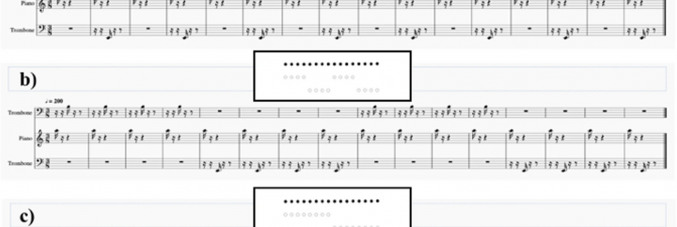
Investigating the Musical Mind
22.04.2024
Studying music can influence the development of certain cognitive abilities including linguistic, spatial, and mathematical skills. Butdo professional musicians perceive numerosity illusions differently? Research shows how long-term musical training influences a person’s perception of optical illusions, noting that their visual material accuracy is stronger compared to those without such training.
A study on this matter, conducted by Alessandra Pecunioso, Andrea Spoto, and Christian Agrillo of the University of Padua’s Department General Psychology, entitled the Investigating acoustic numerosity illusions in professional musicians was recently published in the Psychonomic Bulletin & Review. The researchers presented an acoustic version of the Solitaire illusion, which offers audio files that reproduce an arrangement in pitch space like the linear arrangement of dots in the visual Solitaire illusion, then asked participates to estimate the number of piano notes over a series of audio files composed of piano and trombone sounds.
Researchers used Solitaire Illusions and Regular-Random Numerosity Illusions (RRNI), which are two types of numerosity illusion characterized by a misperception of items presented in the scene. Solitaire Illusions occur when there is an overestimation of the number of elements when they are formed as a single group leading to an underestimation of the same elements when presented in small groups. The second illusion, RRNI, is the tendency to overestimate elements that are grouped in an orderly manner compared to when they are positioned randomly.
The study involved 20 musicians with at least 13 years of musical experience, most of these coming from the Pollini Conservatory of Padua, and a control group of 20 non-musicians. For those participating in the Solitaire illusion, no significant differences emerged between the two groups.
“This study represents one of the few experimental investigations on acoustic illusions of numerology, as well as the only one to have identified a difference in performance between musicians and non-musicians in the presence of a non-visual sensory illusion” says Alessandra Pecunioso, corresponding author of the work.



